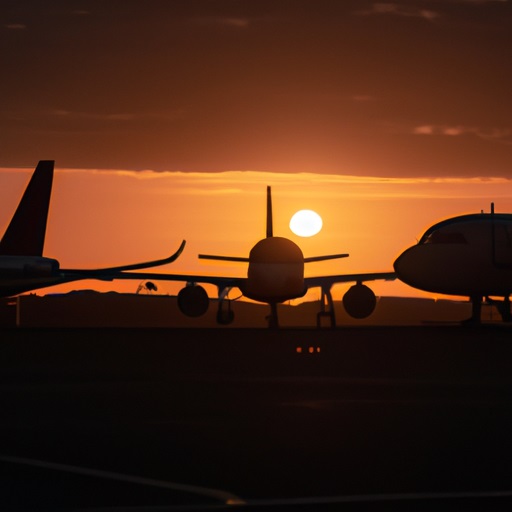
Why Long Haul Low Cost Carriers Fail?
The airline industry has seen a significant rise in long-haul low-cost carriers (LHLC) over the past few years. These carriers promise low fares for long-distance flights, aiming to revolutionize the way we travel.
However, many LHLC carriers have struggled to stay afloat, ultimately leading to their demise. This article explores the reasons why LHLC carriers fail, by examining the challenges they face and the factors contributing to their downfall.
Inherent cost disadvantages
The cost structure of LHLC carriers is one of the primary reasons behind their failure. Unlike short-haul low-cost carriers (SHLC), which have lower operating costs due to shorter flights, LHLC carriers have higher operating expenses. Some of these additional costs include:
Fuel: Fuel costs are higher for long-haul flights due to the increased distance and weight of the aircraft. LHLC carriers cannot significantly reduce fuel expenses without sacrificing payload or range.
Crew: Long-haul flights require larger crews, including additional pilots and cabin crew members. This results in higher labor costs and expenses related to crew accommodation and travel for layovers.
Maintenance: Long-haul aircraft require more extensive maintenance than short-haul planes, as they experience more wear and tear. This translates to higher maintenance costs for LHLC carriers.
Limited cost reduction opportunities
LHLC carriers struggle to achieve the same level of cost reduction as their SHLC counterparts. Some of the factors limiting their ability to reduce costs include:
Aircraft utilization: SHLC carriers can maximize aircraft utilization with multiple short flights per day. However, LHLC carriers are limited in this regard due to longer flight times, reducing the number of flights per aircraft each day.
Ancillary revenue: SHLC carriers generate significant ancillary revenue through baggage fees, seat selection, and other add-ons. However, passengers on long-haul flights expect a certain level of comfort and amenities, making it challenging for LHLC carriers to upsell these services without alienating customers.
Airport fees: Landing fees and airport charges are higher for long-haul flights, as these flights often utilize larger aircraft and require more airport resources.
Intense competition
LHLC carriers face fierce competition from full-service carriers as these major airlines can leverage their established brand and loyalty programs to attract passengers. This intense competition puts significant pressure on LHLC carriers to keep prices low, further eroding their profit margins.
Examples of such competition include Norwegian Air Shuttle’s struggle to compete with established airlines like British Airways and Air France on transatlantic routes, leading to Norwegian’s eventual exit from the long-haul market.
Vulnerability to economic fluctuations
LHLC carriers are more vulnerable to economic fluctuations than full-service airlines. In times of economic downturn, discretionary spending on travel decreases, leading to lower demand for leisure travel – the primary market for LHLC carriers. As a result, these airlines are more susceptible to financial difficulties during economic downturns.
A notable example is the collapse of Primera Air, an Icelandic carrier that went bankrupt in 2018 due to a combination of rising fuel prices, operational challenges, and economic pressures.
Operational challenges
LHLC carriers often face operational challenges, which can impact their profitability and long-term viability. Some of these challenges include:
Route network: Developing a sustainable route network is crucial for LHLC carriers. However, they face difficulties securing slots at major airports, often dominated by full-service airlines and their alliances. This can lead to suboptimal route networks with limited connectivity, making it difficult for LHLC carriers to attract passengers.
Fleet management: LHLC carriers must balance acquiring fuel-efficient, long-range aircraft and minimizing capital expenditure. This can be challenging, as aircraft suitable for long-haul low-cost operations are expensive to acquire and maintain.
Regulatory hurdles: LHLC carriers may face regulatory hurdles in obtaining necessary permits and approvals for their operations, particularly when expanding to new markets. This can result in delays and added costs, hampering their growth prospects.
Consumer perceptions and expectations
LHLC carriers often suffer from negative consumer perceptions due to the trade-offs they make to offer lower fares.
Passengers on long-haul flights expect a certain level of comfort and service, which is often compromised by the no-frills approach adopted by LHLC carriers. This can lead to dissatisfaction among passengers, impacting the carrier’s reputation and future bookings.
External factors
External factors such as geopolitical events, natural disasters, and global health crises can significantly impact the aviation industry, particularly for LHLC carriers that operate on thin margins.
For instance, the COVID-19 pandemic led to widespread travel restrictions, causing many airlines, including LHLC carriers like AirAsia X, to face severe financial difficulties.
Conclusion
While long-haul low-cost carriers promise to revolutionize air travel with affordable fares, they face several challenges that contribute to their high failure rate.
Factors such as inherent cost disadvantages, limited cost reduction opportunities, intense competition, vulnerability to economic fluctuations, operational challenges, negative consumer perceptions, and external factors all contribute to the downfall of many LHLC carriers.
LHLC carriers must reevaluate their business models, optimize operational efficiency, and invest in customer experience to succeed in this challenging market. Only then can they hope to overcome these hurdles and provide a sustainable, affordable alternative to traditional long-haul air travel.





